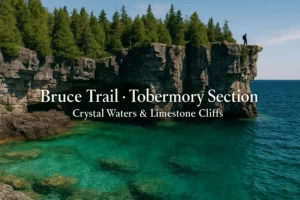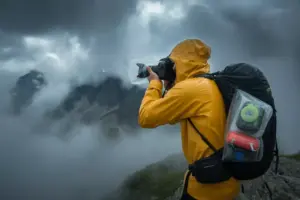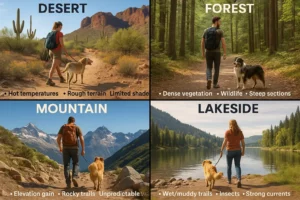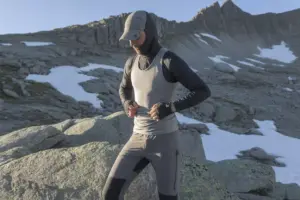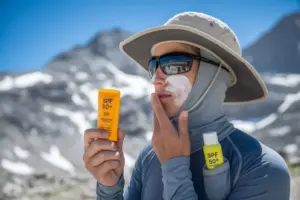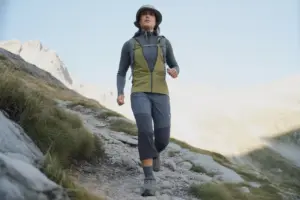The Best Hiking Trails in Sedona: A Guide to the Red Rock Vortexes
Picture yourself standing atop a crimson sandstone formation, surrounded by towering red rocks that seem to glow with an otherworldly energy. Welcome to Sedona, Arizona – a desert paradise where ancient geological wonders meet spiritual mysticism, creating one of America’s most spectacular hiking destinations. Whether you’re seeking challenging climbs, family-friendly walks, or transformative vortex experiences, Sedona’s trails offer something magical for every adventurer.
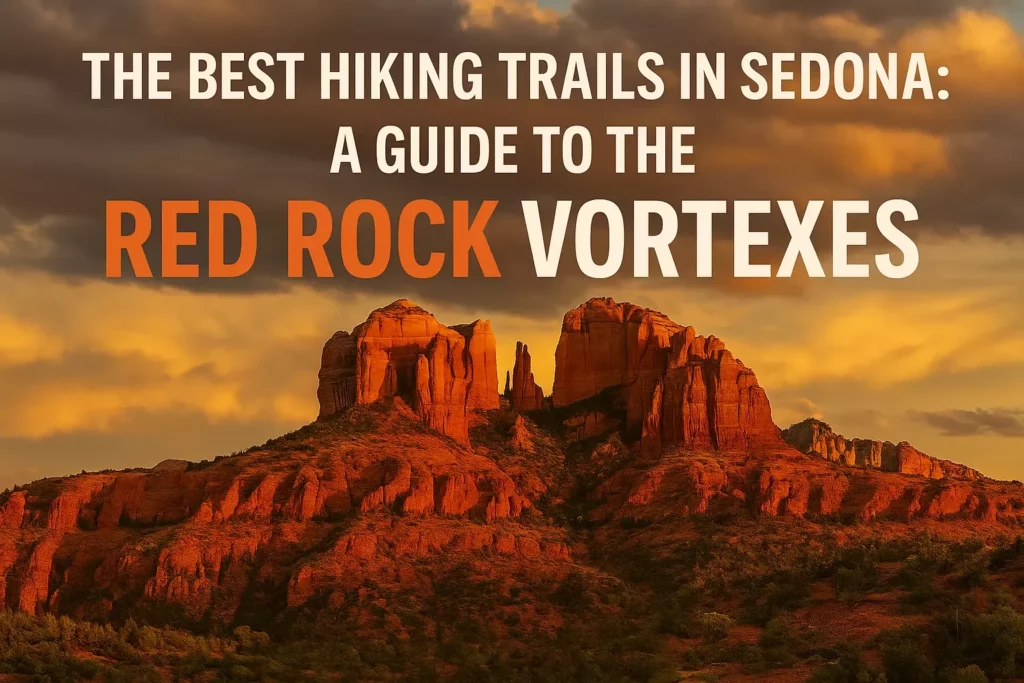
Key Takeaways
- Cathedral Rock and Bell Rock are the most accessible vortex sites, perfect for beginners seeking spiritual experiences
- Devil’s Bridge offers Sedona’s most Instagram-worthy natural arch, requiring a moderate 2-mile hike
- West Fork Trail provides a completely different experience with creek crossings and lush vegetation
- Best hiking times are early morning (6-9 AM) and late afternoon (4-6 PM) to avoid crowds and heat
- Proper preparation including water, sun protection, and sturdy footwear is essential for safe desert hiking
Understanding Sedona’s Unique Landscape and Vortex Energy
Sedona’s distinctive red rock formations were created over millions of years through geological processes that deposited layers of sandstone, limestone, and volcanic rock. These towering monoliths, ranging from 4,000 to 7,000 feet in elevation, create a dramatic backdrop for hiking adventures.
The area is famous for its vortex sites – locations where many visitors report feeling heightened spiritual energy, enhanced meditation, and emotional healing. While science hasn’t definitively proven these energy fields, the combination of Sedona’s natural beauty and peaceful atmosphere certainly creates an environment conducive to reflection and renewal.
What Makes Sedona Vortexes Special?
Sedona’s four main vortex sites each offer different types of energy:
- Upflow vortexes (Cathedral Rock, Boynton Canyon) – promote inspiration and spiritual connection
- Inflow vortexes (Bell Rock) – encourage introspection and meditation
- Combination vortexes (Airport Mesa) – provide balanced energy for healing and clarity
Essential Preparation for Sedona Hiking
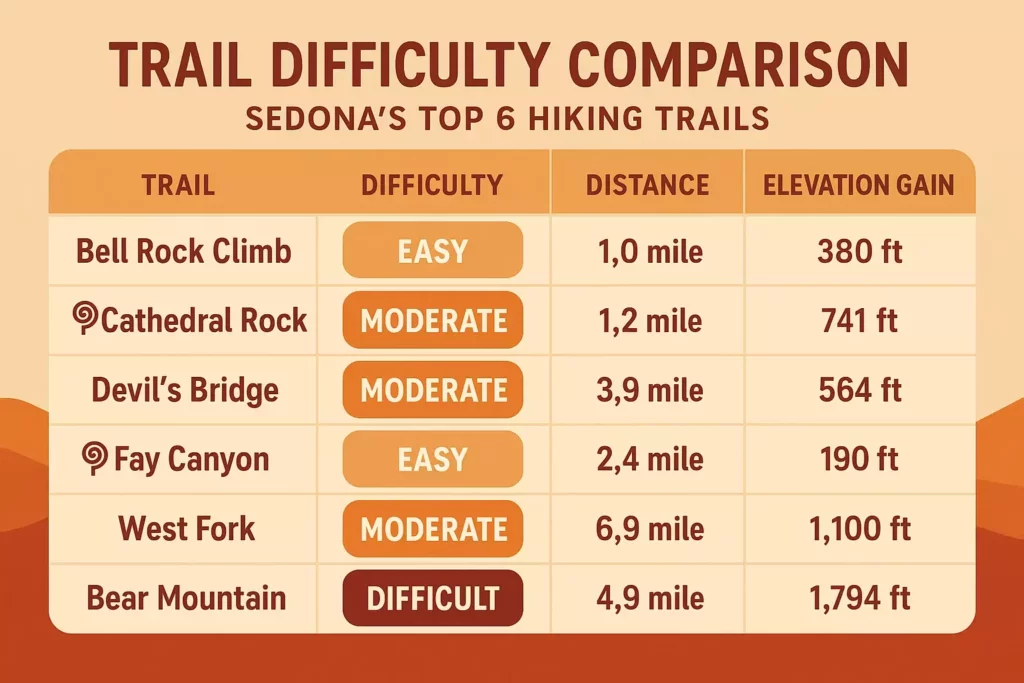
Before exploring Sedona’s trails, proper preparation ensures both safety and enjoyment. The desert environment presents unique challenges that require specific gear and planning.
What to Bring
Water and Hydration 💧
- Carry at least 1 liter per person for short hikes, 2-3 liters for longer trails
- Consider electrolyte supplements for extended hiking
- Learn about water purification methods if planning overnight trips
Sun Protection ☀️
- Wide-brimmed hat and UV-protective sunglasses
- SPF 30+ sunscreen (reapply every 2 hours)
- Lightweight, long-sleeved shirts for extended exposure
Footwear and Clothing
- Sturdy hiking boots with good ankle support
- Moisture-wicking clothing in light colors
- Check out cool weather camping clothes for winter hiking
Safety Essentials
- First aid kit with bandages, pain relievers, and blister treatment
- Map, compass, or GPS device
- Emergency whistle and flashlight
Top Hiking Trails in Sedona
1. Cathedral Rock Trail (Vortex Site) ⭐⭐⭐⭐⭐
Difficulty: Moderate to Difficult
Distance: 1.5 miles roundtrip
Elevation Gain: 600 feet
Trailhead: Back O’ Beyond Road
Cathedral Rock stands as one of Sedona’s most iconic formations and powerful vortex sites. This challenging scramble rewards hikers with breathtaking 360-degree views and profound spiritual energy.
Trail Highlights:
- Steep rock scrambling requiring hands and feet
- Spectacular sunrise and sunset photography opportunities
- Multiple meditation spots along the ascent
- Views of Bell Rock, Courthouse Butte, and Oak Creek
Pro Tips:
- Start early to avoid crowds and afternoon heat
- Wear shoes with excellent grip for rock scrambling
- Bring a small backpack to keep hands free for climbing
- Allow 2-3 hours for the complete experience
2. Bell Rock Trail (Vortex Site) ⭐⭐⭐⭐
Difficulty: Easy to Moderate
Distance: 3.6 miles roundtrip
Elevation Gain: 300 feet
Trailhead: Bell Rock Pathway parking area
Bell Rock offers the most accessible vortex experience in Sedona, making it perfect for families and beginners seeking spiritual connection without extreme physical demands.
Trail Features:
- Well-marked pathway suitable for most fitness levels
- Multiple access points for shorter walks
- Juniper and pinyon pine forest sections
- Panoramic views of Village of Oak Creek
Vortex Experience:
Many visitors report feeling the strongest energy on Bell Rock’s southern and southeastern slopes. Look for twisted juniper trees – a common indicator of vortex energy according to local belief.
3. Devil’s Bridge Trail ⭐⭐⭐⭐⭐
Difficulty: Moderate
Distance: 4.2 miles roundtrip
Elevation Gain: 400 feet
Trailhead: Dry Creek Road (high-clearance vehicle recommended)
Devil’s Bridge showcases Sedona’s largest natural sandstone arch, creating one of the most photographed landmarks in Arizona.
Trail Description:
- First 1.5 miles follow an old jeep road
- Final 0.6 miles involve rocky terrain and moderate climbing
- Multiple photo opportunities throughout the hike
- Option to walk across the bridge (use extreme caution)
Photography Tips:
- Golden hour (sunrise/sunset) provides the best lighting
- Bring a wide-angle lens to capture the full arch
- Consider a tripod for long-exposure shots
- Respect other hikers when taking photos
4. West Fork Trail ⭐⭐⭐⭐
Difficulty: Easy
Distance: 6.9 miles roundtrip
Elevation Gain: 200 feet
Trailhead: West Fork parking area (Call of the Canyon)
West Fork offers a completely different Sedona experience, featuring lush riparian vegetation, creek crossings, and towering canyon walls.
Unique Features:
- Multiple stream crossings (waterproof boots recommended)
- Cottonwood, sycamore, and oak trees create shade
- Spectacular fall colors (October-November)
- Slot canyon sections with narrow passages
Seasonal Considerations:
- Spring (March-May): Wildflowers and flowing water
- Summer (June-August): Cooler temperatures due to shade
- Fall (September-November): Peak foliage colors
- Winter (December-February): Possible ice formations
5. Boynton Canyon Trail (Vortex Site) ⭐⭐⭐⭐
Difficulty: Moderate
Distance: 6.1 miles roundtrip
Elevation Gain: 200 feet
Trailhead: Boynton Canyon parking area
Boynton Canyon combines vortex energy with diverse ecosystems and ancient Native American ruins, offering both spiritual and historical significance.
Trail Highlights:
- Kachina Woman rock formation (sacred to local tribes)
- Ancient Sinagua cliff dwellings
- Desert and riparian plant communities
- Upflow vortex energy throughout the canyon
Cultural Respect:
This area holds deep spiritual significance for Native American tribes. Please observe all posted signs, stay on designated trails, and maintain respectful behavior throughout your visit.
6. Airport Mesa Trail (Vortex Site) ⭐⭐⭐
Difficulty: Easy
Distance: 3.3 miles roundtrip
Elevation Gain: 200 feet
Trailhead: Airport Road
Airport Mesa provides easily accessible vortex energy with panoramic views of Sedona’s most famous landmarks.
Best Features:
- 360-degree views of major rock formations
- Excellent sunset viewing location
- Short hiking distance with big rewards
- Combination vortex energy (balancing and healing)
Planning Your Sedona Hiking Adventure
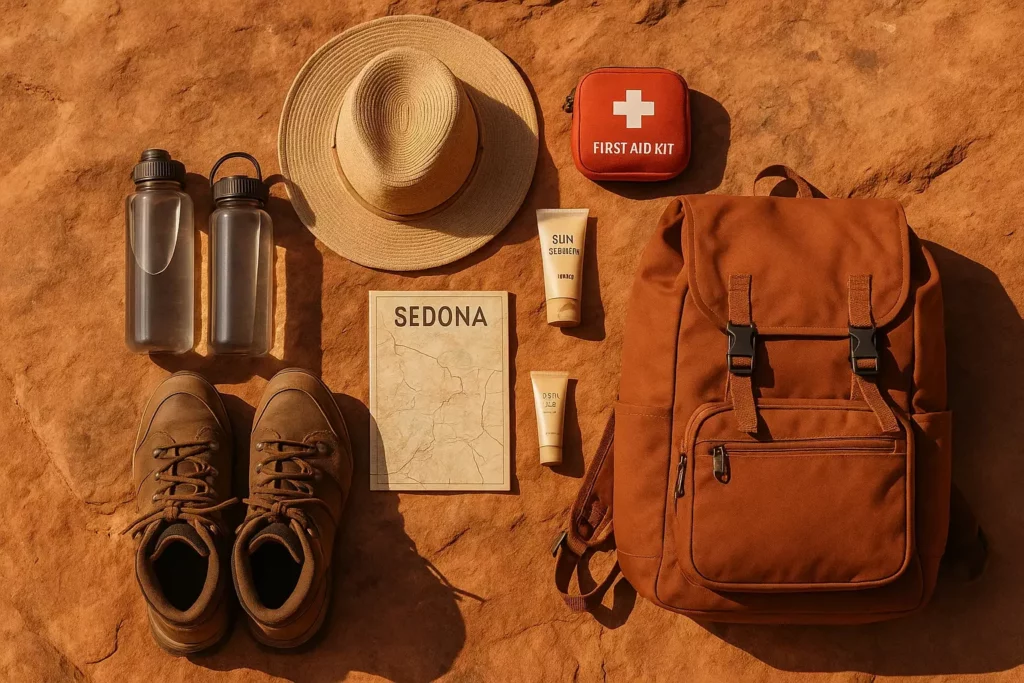
Best Times to Visit
Seasonal Considerations:
- Spring (March-May): Perfect weather, wildflowers, moderate crowds
- Summer (June-August): Hot temperatures, early morning hiking essential
- Fall (September-November): Ideal conditions, peak tourist season
- Winter (December-February): Cool temperatures, possible snow on higher elevations
Daily Timing:
- Early Morning (6-9 AM): Cool temperatures, fewer crowds, best photography light
- Late Afternoon (4-6 PM): Golden hour lighting, cooler than midday
- Avoid Midday (10 AM-3 PM): Intense heat, harsh lighting, crowded trails
Transportation and Parking
Parking Challenges:
Popular trailheads fill up quickly, especially on weekends and during peak season. Arrive early or consider these alternatives:
- Shuttle Services: Several companies offer transportation to trailheads
- Alternative Parking: Some trails have multiple access points
- Weekday Visits: Significantly less crowded than weekends
Family-Friendly Options
Sedona offers excellent hiking opportunities for families with children. Consider these tips when camping with kids:
Easy Family Trails:
- Bell Rock Pathway (flat sections)
- Airport Mesa (short distance)
- Red Rock Crossing (creek play opportunities)
Family Preparation:
- Pack extra water and snacks
- Bring family camping activities for rest breaks
- Choose shorter distances and easier terrain
- Plan frequent stops for exploration and photos
🏔️ Find Your Perfect Sedona Trail
Safety Considerations and Desert Hiking Tips
Weather Awareness
Sedona’s desert climate can change rapidly, especially during monsoon season (July-September). Always check weather forecasts and be prepared for:
- Flash floods in washes and narrow canyons
- Lightning strikes on exposed ridges
- Extreme temperature swings between day and night
- High winds that can affect balance on narrow ledges
Wildlife Encounters
While wildlife encounters are relatively rare, Sedona is home to various desert animals:
Common Wildlife:
- Javelinas (wild pigs) – give wide berth, especially with young
- Coyotes – typically avoid humans but don’t approach
- Rattlesnakes – watch where you step, especially in warmer months
- Mountain lions – rare but present; make noise while hiking
Emergency Preparedness
Before You Go:
- Inform someone of your hiking plans and expected return time
- Download offline maps to your phone
- Consider carrying a survival kit for longer hikes
- Know the location of the nearest medical facilities
During Your Hike:
- Stay on marked trails to prevent erosion and getting lost
- Turn back if weather conditions deteriorate
- Conserve energy and water in hot conditions
- Use the buddy system whenever possible
Extending Your Sedona Adventure
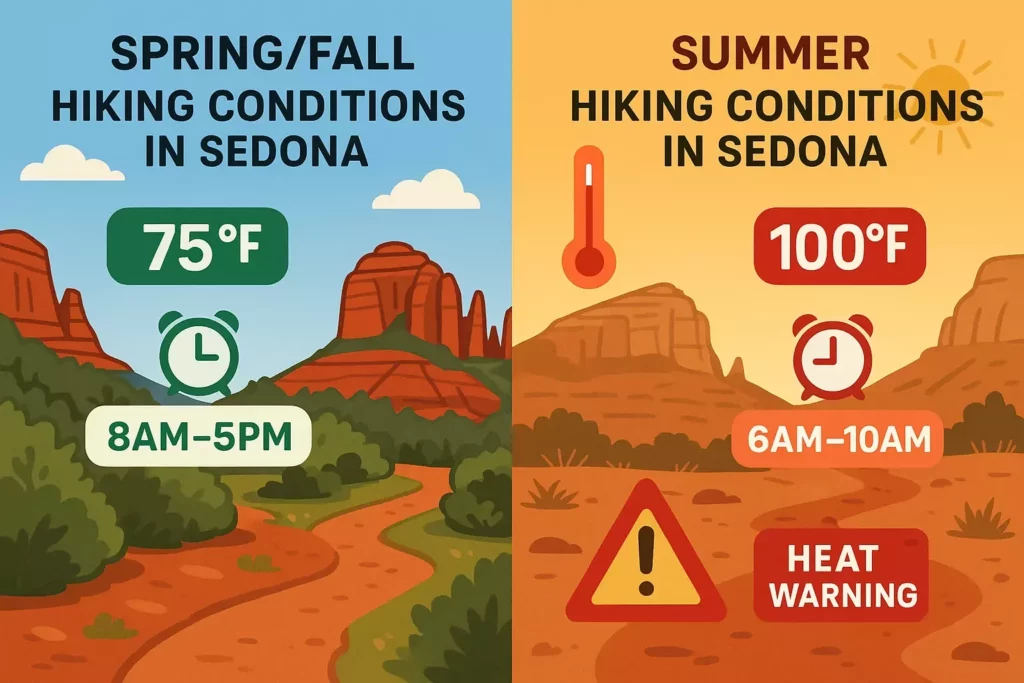
Multi-Day Options
For those wanting to extend their Sedona experience, consider these options:
Camping Opportunities:
- Manzanita Campground (Oak Creek Canyon) – reservations required
- Cave Springs Campground – first-come, first-served
- Dispersed camping on National Forest lands
Backpacking Preparation:
Learn how to pack your backpack efficiently for overnight trips and choose the right sleeping bag for desert conditions.
Nearby Attractions
Oak Creek Canyon:
- Slide Rock State Park (natural water slides)
- Swimming holes and picnic areas
- Morning meal preparation spots along the creek
Cultural Sites:
- Tlaquepaque Arts Village
- Chapel of the Holy Cross
- Native American heritage sites
Photography Tips for Sedona’s Red Rocks
Best Photography Locations
Golden Hour Magic:
- Cathedral Rock from Red Rock Crossing
- Bell Rock from the Bell Rock Pathway
- Devil’s Bridge for dramatic arch shots
- Airport Mesa for panoramic sunset views
Equipment Recommendations:
- Wide-angle lens for landscape shots
- Polarizing filter to reduce glare and enhance colors
- Tripod for long exposures and sharp images
- Extra batteries (cold weather drains them quickly)
Composition Techniques
Leading Lines: Use trails, rock formations, and creek beds to guide the viewer’s eye
Foreground Interest: Include desert plants, rocks, or streams in the foreground
Scale Reference: Include people in shots to show the massive size of rock formations
Weather Drama: Stormy skies and dramatic clouds add mood to red rock photos
Respecting Sedona’s Sacred Landscape
Leave No Trace Principles
Sedona’s popularity requires extra care to preserve its natural beauty:
- Plan ahead and prepare – research trails and regulations
- Travel and camp on durable surfaces – stay on designated trails
- Dispose of waste properly – pack out all trash and human waste
- Leave what you find – don’t move rocks or take souvenirs
- Minimize campfire impacts – use established fire rings only
- Respect wildlife – observe from distance, don’t feed animals
- Be considerate of other visitors – keep noise levels down
Cultural Sensitivity
Many of Sedona’s rock formations hold deep spiritual significance for Native American tribes. Show respect by:
- Following all posted signs and restrictions
- Not climbing on or disturbing ancient ruins
- Keeping voices low in sacred areas
- Not leaving offerings or stacking rocks
- Learning about the area’s indigenous history
Seasonal Hiking Guide
Spring Hiking (March-May) 🌸
Advantages:
- Perfect temperatures (60-80°F)
- Wildflower blooms throughout desert
- Flowing water in creeks and streams
- Moderate tourist crowds
What to Expect:
- Lupines, poppies, and desert marigolds in bloom
- Occasional spring rain showers
- Ideal conditions for all skill levels
- Peak photography conditions
Summer Hiking (June-August) ☀️
Challenges:
- Extreme heat (90-110°F)
- Intense UV exposure
- Crowded trails despite heat
- Limited hiking windows
Summer Strategies:
- Start hikes before 6 AM
- Choose shaded trails like West Fork
- Carry extra water and electrolytes
- Consider higher elevation trails
Fall Hiking (September-November) 🍂
Highlights:
- Perfect weather returns (70-85°F)
- Spectacular fall foliage in canyons
- Clear, crisp air for photography
- Peak tourist season begins
Fall Colors:
- Cottonwoods turn golden yellow
- Sycamores display bright yellow leaves
- Oak trees show red and orange hues
- Best viewing in West Fork and Oak Creek Canyon
Winter Hiking (December-February) ❄️
Unique Experiences:
- Cool, comfortable temperatures (45-65°F)
- Possible snow on higher elevations
- Fewer crowds on most trails
- Dramatic winter storm photography
Winter Considerations:
- Check weather for snow and ice conditions
- Dress in layers for temperature changes
- Some higher trails may be inaccessible
- Shorter daylight hours require early starts
Conclusion
Sedona’s red rock trails offer an unparalleled combination of natural beauty, spiritual energy, and outdoor adventure. From the challenging scramble up Cathedral Rock to the peaceful creek walks of West Fork, each trail provides its own unique rewards and experiences.
Your Next Steps:
- Choose your trails based on fitness level and interests using our trail selector
- Check current conditions and weather forecasts before departing
- Prepare properly with adequate water, sun protection, and safety gear
- Respect the environment by following Leave No Trace principles
- Plan your visit during optimal times to avoid crowds and extreme weather
Whether you’re seeking vortex energy, photographic opportunities, or simply want to immerse yourself in one of America’s most stunning landscapes, Sedona’s trails deliver transformative experiences that will call you back again and again. The red rocks are waiting – your adventure begins with that first step onto the trail.
Remember that every hiker’s experience is unique, and what matters most is finding the trails that speak to your soul and match your abilities. Take time to truly experience each location, breathe in the desert air, and let Sedona’s ancient energy work its magic on your spirit.

